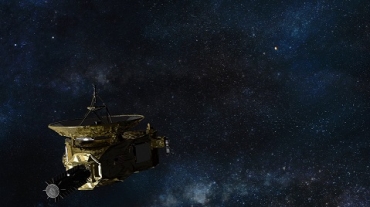
 Nat Geo hosts the one-hour special, which gains unprecedented access to an incredible journey more than nine years, 700 million dollars and over 3 billion miles in the making
Nat Geo hosts the one-hour special, which gains unprecedented access to an incredible journey more than nine years, 700 million dollars and over 3 billion miles in the making
On 14 July NASA’s spacecraft New Horizons is scheduled to make a historic flyby of Pluto. This will be a culmination of an incredible space journey that began nine years ago, when New Horizons was launched into space. Since then, the spacecraft has covered over 3 billion miles in this historic mission to the edge of the solar system. New Horizon’s goal is to capture the first clear images and any other data for Pluto.
Nat Geo’s Mission Pluto, premiering on the same day as the spacecraft is schedule to do a flyby of Pluto, will take an in-depth look at the ambitious project from start to finish, leading into the final hours of the epic journey. The episode will give an unprecedented access to showcase how the mission was put together. It will also feature the people who made it all possible, like mission leader Dr. Alan Stern, a veteran of 24 previous NASA missions, who comments, “The people on this team, most of them have worked on [the mission] for a very big portion of their careers. When you put that much time and effort into a project, you’re pretty excited when you’re on Pluto’s doorstep.”
Mission Pluto is yet another example of spectacular space related content that Nat Geo endeavors to bring time and again for the viewer. When it comes to content showcasing the wonders of space, the channel’s credibility is unmatched. Apart from the pedigree of the brand, what helps is the fact that Nat Geo lays a special emphasis on topical and relevant content – like the Rosetta Special episode the channel premiered last year.
Along with showcasing an event leading to an historic moment for the world, Mission Pluto is also a treat to watch simply because of the cinematographic brilliance of the content.
This Mission Pluto special, hosted by Jason Silva, who is also the host of NGC’s hit series, Brain Games, will premiere globally on National Geographic Channels across 170 countries in 45 languages.
On July 14, 2015, when the spacecraft arrives, it will speed by Pluto at close to 9 miles per second without any means of stopping. The core flyby will last less than two hours, creating a very tight window for the spacecraft to photograph Pluto, map the surface, analyze the atmosphere, and examine the geology of the surface. There are chances that the mission fails, but if it doesn’t Nat Geo will have the first ever pictures of Pluto which will be released a couple of days after the Mission Pluto episode has premiered.
Tune-in to National Geographic Channel to watch Mission Pluto on 14July at 10 PM
